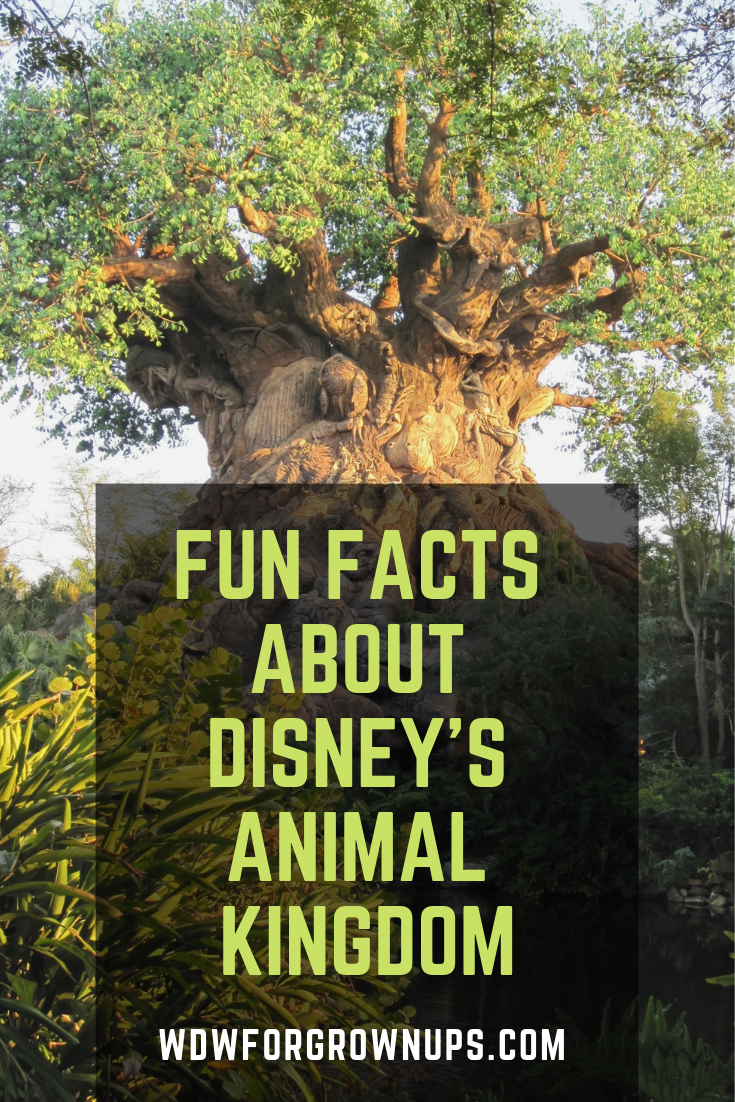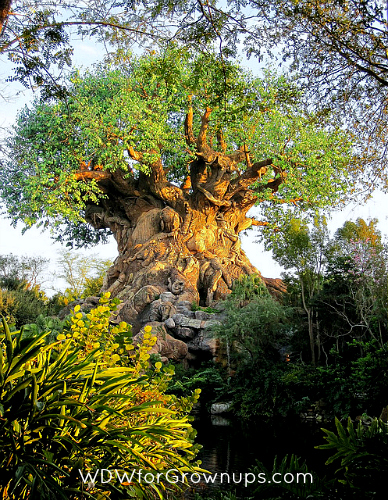Fun Facts About Disney’s Animal Kingdom
The 500-acre Animal Kingdom is Walt Disney World's newest and largest Theme Park, it opened on Earth Day in April 1998 and has been entertaining guests ever since. The unique Park concept centers around edutainment about our planet, and the creatures that walk it. Not just a theme park Disney's Animal Kingdom puts focus on scientific research and conservation. The research scientists and animal keepers have made ground-breaking discoveries and substantial contributions to animal welfare and repopulation.
 Fun Facts About Disney's Animal Kingdom
Fun Facts About Disney's Animal Kingdom
 Disney's Animal Kingdom Combines Fun and Conservation
Disney's Animal Kingdom Combines Fun and Conservation
Water is important to life on this planet, and Disney's Animal Kingdom showcases water features to compliment the guests and animals needs. It's said that 27 million gallons of water flow through Discovery River, and another 2.6 million throughout the rest of the park, moving through filtration systems as much a five times a day.
The centerpiece of the park is the amazing 145 feet tall and 160 feet wide Tree of Life. The base of the tree is actually an oil rig, made to withstand Floridian hurricane winds. 10 artists and 3 Imagineers worked on the famous icon full-time for 18 months, creating more than 300 intricate carvings, and topping it with
more than 102,583 transparent leaves in five different colors of green.
But the Tree of Life is not the only greenery in the park to make you wonder. More than 4 million trees, plants, shrubs, ground-covers, vines, epiphytes and grasses were planted to make us the varied Animal Kingdom landscapes. There are plants from every continent on Earth - except Antarctica.
 The Tree of Life
The Tree of Life
Since the park opened in 1998, it has been lauded for conservations efforts to improve the situations of several endangered animal species. One of the miracles of the park is the eight endangered white rhinos that have been born at Animal Kingdom. With roughly only 11,000 left in the entire world, each of these babies carries the hope of repopulation.
Disney's Animal Kingdom is also the home to some of the world's largest animals in big numbers. They house the largest groups of both Nile Hippos and African elephants in North America.
You might remember Zebras on the Kilimanjaro Safari ride, but sadly they are no more. Rumor has it that the zebras were just too aggressive, blocking paths, and even attacking ride vehicles. We waiting 10 minutes for this little guy shown below to get out of the way of our safari truck.
Have you ever wondered how Disney gets the animals stay where they can be visible? In trees, and behind hallowed out logs and rocks the animal care team hides treats and goodies called browse. This encourages the otherwise shy animals to get up close and personal, while giving them a chance to find their food in a more natural manner.
 No More Zebras On This Safari
No More Zebras On This Safari
Found high up on stilts, DiVine is a stunning beauty that you may be lucky enough to see if you have a good eye. Be on the lookout in the greenery on the pathway between the Africa and Asia sections of the park, this camouflaged stilt performer is dressed as a living vine.
Original park plans included a land called the "Beastly Kingdom," this area was to be dedicated to mythical creatures such as dragons and unicorns. While the concept was scrapped, you can still see creative elements from it, such as the dragon in some of the logos. The Beastly Kingdom area is now being made into Avatar Land.
Chester and Hester Dinoland USA is a unique area in Disney because it feels like a roadside carnival. Not only does this land pay homage to Dinosaurs, but the roadside kitsch that popped up along the routes and highways of the American West.
At more than $100,000,000, Expedition Everest is the most expensive roller coaster ever made. It stands 199.5 feet tall, just shy of the Federal Aviation Guidelines that would have caused the faux mountain to have a red light beacon on top.
 The exquisite DiVine
The exquisite DiVine
Because the park is very animal conscience and puts the health and wellbeing of its residents before guests, balloons and plastic straws are not permitted in Disney's Animal Kingdom, or at Disney's Animal Kingdom Lodge.
Disney's Signature Dining Experience in Animal Kingdom is known as Tiffins; and on inside the restaurant you can see travel notes, art, and artifacts that inspired the Imagineers who put their heart and souls into creating Animal Kingdom Park.
For a small donation, or purchase of a special button, you can join Disney in their efforts to help wildlife with the Disney Worldwide Conservation Fund. Since 1995, this fun had championed more than 300 project, donating more than $7 million in grants to conservation causes.
What are your favorite Animal Kingdom facts? Share them with other readers in the comments below.











Post new comment